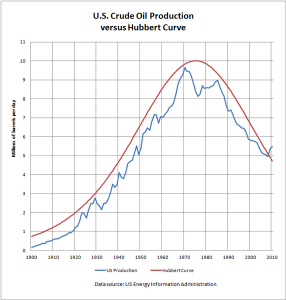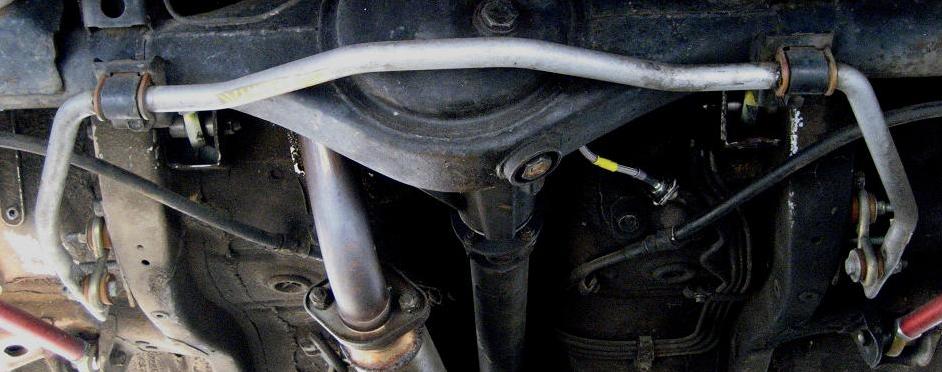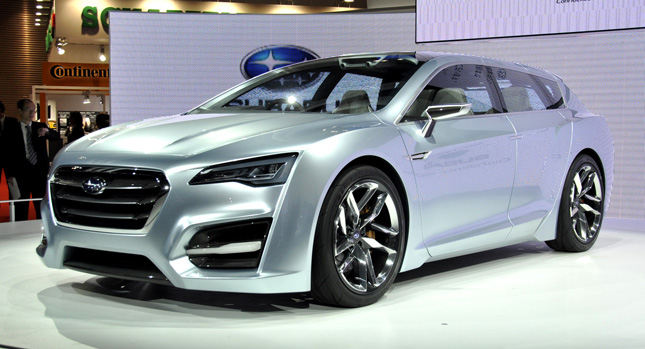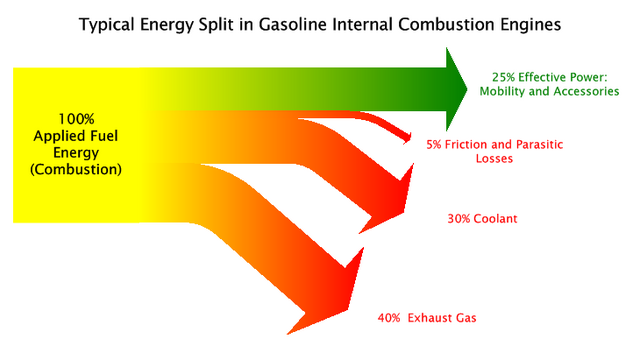I had to do a rear anti-roll bar adjustment on my AE86 the other day, so I figured I would take pictures and do a write up on it. A lot of people overlook the role of anti-roll bars (also known as swaybars or anti-sway bars) when it comes to tuning chassis balance. You can dial in large changes in grip for the front and rear axles to compensate for the natural tendencies of the chassis you’re working with. I like to use the anti-roll bars to get the front to rear axle balance in the ballpark before fine tuning it with the damper settings on the shocks. If only damper settings are used to control body roll, the shocks will be too stiff on compression. The car’s overall grip ultimately won’t improve because it’ll start crashing over bumps and upsetting the weight of the car on the tires. Trying to tune chassis balance using only the springs and dampers is an incorrect way to implement those parts. That’s why I don’t consider an adjustable suspension setup complete until you have anti-roll bars. Continue reading
Tag Archives: linkedin
Why Build an Electric Car? Part 3: Nissan Leaf and Chevrolet Volt
Here’s a hypothetical situation that hopefully doesn’t seem too outlandish. Lets say you’re a young professional who is making good money and are looking to reward yourself by buying a new car. You’ve been a car guy/girl your whole life, so you want something sporty that’s nicer than an economy car with aftermarket coilovers. Lets take it one step farther and say you’re also very intelligent and socially aware, so you know what we’ve covered in Part 1 and Part 2 of why we should consider driving electric cars and you’d like to find personal transportation that’s not motivated by the combustion of fossil fuels.
Where does that leave you? As of this writing, there are two middle class affordable mass production electric cars available for purchase at a dealership: the Nissan Leaf and the Chevy Volt. I went to my local dealerships as our hypothetical car shopper to see what the buying experience for these electric cars would be like. I wanted to find out about the stuff that went beyond the sales brochure. How much did all the options add to the base price of the car? What kind of maintenance intervals would they have? What are the charger options? What kind of work can I do to the car myself? Most importantly, how well did these dealerships actually know these electric cars? Here’s how our hypothetical car buyer’s shopping day turned out. Just as a note: we’ll be discussing the price of these cars without government subsidies simply because they won’t always be available and because EV’s will have to compete on even ground with regular cars if they’re going to penetrate the US market.
Subaru Advanced Tourer WRX Electric Turbo Hybrid
Motor Trend is reporting that the Advanced Tourer Concept (ATC) that Subaru unveiled last year is actually the prototype for the new WRX. The all new 2012 Impreza is currently for sale, but Subaru is looking to separate the WRX from the Impreza. The WRX’s chassis will be a heavily modified version of the Impreza’s, but it will be different enough to warrant it being its own model. Continue reading
Why Build An Electric Car? Part 2: Engineering
In the second part of our discussion on why we should build electric cars, we’re going to take a closer look at what it takes to use a combustion engine and where electric motors can improve on their performance. Much of the technology required for the use of engines is accepted simply because it’s the way we’ve done it for a long time. Take a minute to give this question some serious thought: What if the car had been invented today? Given what you now know about where we get our oil (covered in Part I), do you think the established automotive industry would look the same if was built from scratch right now? Let me show you some of the facts.
This one will probably surprise you. Your typical car engine achieves about 18-25% efficiency. That’s it. Only one quarter of the energy that is contained in the gasoline that you purchase actually goes to turning the crankshaft of your engine. Where does the other 80% of the energy go? Heat and friction. Gasoline contains so much energy that we’re still able to power our cars with it even though engines are so inefficient. Here’s another way to look at it: 75% of your gas money is just being thrown away.
Why Build An Electric Car? Part 1: Oil
My reasons for building electric cars are split into two categories: oil and engineering. We’ll discuss oil first. The two main points here are that oil is running out and our usage and harvesting of it is causing irreparable damage to our planet. I’ll prove it to you.
Hubbert Peak Theory
In 1956, Marion King Hubbert, an American geoscientist, came up with the Peak Oil Production theory. What he figured out was that if you make a graph with time on the X-axis and oil production on the Y-axis, it will look like a bell curve. Oil production started small because we were still developing the techniques for finding and harvesting oil. As  the processes were mastered and the infrastructure built, oil production rose until it peaked in the mid-70’s. It’s no coincidence that the Golden Age of muscle cars was also during the mid-70’s. Oil production then started to decrease as we used up the oil from the high quality, easy to find deposits. In order to keep producing oil, we now have to look harder to find oil deposits of lower quality. More effort and money has to be spent to produce each barrel of oil. From here, the price of oil keeps climbing and supplies keep dwindling until there’s nothing left. US oil production has followed Hubbert’s Theory pretty closely which currently puts us on the back side of the bell curve. That means big companies are starting to go through some pretty ridiculous measures to continue to find oil. Here’s what the future of oil production holds for us all:
the processes were mastered and the infrastructure built, oil production rose until it peaked in the mid-70’s. It’s no coincidence that the Golden Age of muscle cars was also during the mid-70’s. Oil production then started to decrease as we used up the oil from the high quality, easy to find deposits. In order to keep producing oil, we now have to look harder to find oil deposits of lower quality. More effort and money has to be spent to produce each barrel of oil. From here, the price of oil keeps climbing and supplies keep dwindling until there’s nothing left. US oil production has followed Hubbert’s Theory pretty closely which currently puts us on the back side of the bell curve. That means big companies are starting to go through some pretty ridiculous measures to continue to find oil. Here’s what the future of oil production holds for us all:




